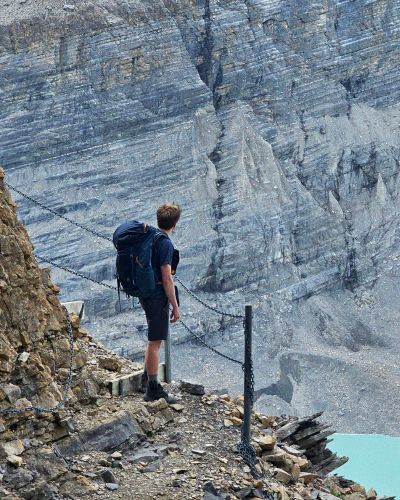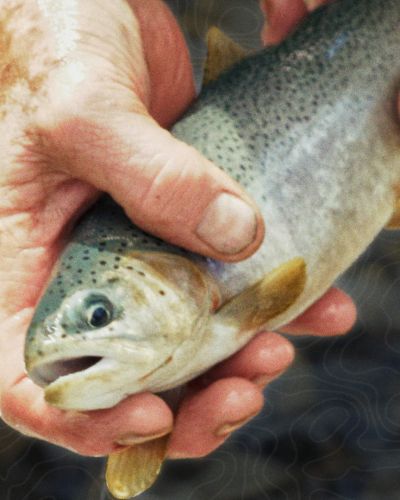Imagine the frigid temperatures and relentless wind cutting through the air as you sculpt something beautiful, something that will eventually vanish.
Why make art in such harsh conditions?
I met with a local ice sculptor in December to learn more about the world of ice sculpting and to discover why someone works with this interesting medium.
Meet Julian Lee, aka Iceman Julian, who has been sculpting for nearly two decades. From stone, to wood, and even pumpkins, Lee expresses himself through his 3D creations.
But one that has always stuck out to him, is ice. A heavy (around 300lbs), slippery substance, that will eventually disappear.
I learned that for Lee it’s not merely about his creations—but something deeper.
“I think it’s like in my DNA,” Lee said.
The inevitable melting of his creation doesn’t bother him because he sees it as an opportunity to make something even better next time.
“As an artist, it’s like a chef,” he said. “You make a very good plate a food but if that plate lasts forever, you don’t get to make another [one].”
His ice sculpting journey began after he watched a news segment featuring a chef who was carving ice at a hotel. After an extensive interview process, Lee got a job at the hotel and soon after began shadowing the chef when he carved ice.
“While he’s doing his ice carving, I swept the floor and helped him put [the ice] away,” he explained. “He taught me a few basics – a chainsaw, how to use it, and I start carving.”
The chef is a Japanese ice carver and got Lee to start carving baskets. Lee said carvers typically create around 50 baskets to hone in their skills, but chef only got him to carve a few before making a realization.
“He said, you are one of the rare people who is able to see three dimensional in your head, in your eyes,” Lee explained “When I find that out, I realize I’m not going to hold you back and make you do baskets, I let you free.”
From that point on, Lee was able to start carving whatever he could think of and the chef acted as his critic and mentor, helping him improve his craft.
Lee can rotate images, see depth, and figure out how something is going to look before he even creates it, so makes sense how he connects so strongly with his art. He’s merging his body and his mind.
When it comes to our brains, some people think in words, others in pictures, and some don’t even have an inner monologue.
Try this out quickly. Close your eyes and think about an apple. What do you see exactly? Is it a 2D image? Is it as if you’re right there holding it in person? Do you see it in words, or do you see nothing at all?
I can see an apple in 3D, but I can’t manipulate it at all. It’s crazy to me that there’s people like Julian who can see so much more.
Another aspect about ice carving Lee enjoys is the live audience.
“You basically have 3 seconds to convince them to stay and watch what you’re doing,” he said. “You get feedback really fast. Do they like the theme I’m doing? Do they like the craftsmanship I present?”
Lee had a warm and welcoming personality that was quite inspiring. I could tell right away that he had a true passion for his work. The part that struck me the most was no matter the adversity he faced at the event where we filmed – from cold temperatures (I wore boots and my toes were still frozen after a few hours), to some power issues – he always kept a positive mindset.
Whenever people came by his booth he drew them in with the power tools and was eager to answer questions. Multiple times he even let kids assist him and I could tell that made their day… and his.
I could tell this wasn’t just about the art, but something more.
Q: Why are you drawn to ice sculpting as an art form? Why do you sculpt?
A: “People think when we do our work, we want to show people something and that’s very true. But when you actually look deeper into it, you’re actually reaching into your self to try and find what’s in there.
[I’m finding] an emotion that’s actually inside me at that moment. I want to meet my feeling. I want to meet my inner self that I don’t know so well even though we’ve lived together for many years, day and night.
When I sculpt, I’m actually connecting with myself, my deeper self.”
*Answers have been edited for clarity.



